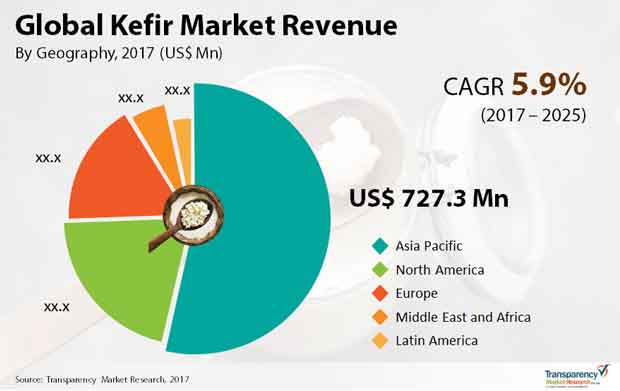RE-LWAY speculation
Difference Between Dannon Yogurt & Lifeway Kefir
livestrong.com

Danone to Sell Stake in Japan's Yakult for $1.8 Billion.http://fortune.com/2018/02/14/danone-sells-stake-yakult/
Global Kefir Market: Keen Players Take Both Organic and Inorganic Routes to Expand, observes TMRSuccess-hungry companies in the global kefir market are pulling out all stops to grow their market shares. They are adopting both the inorganic and organic routes to surge ahead of their competitors. For instance, they are pouring money into product development and are also always on the lookout of for strategic mergers and acquisitions to bolster positions.
A few of the dominant players in the global market for kefir are Nestle S.A., Hain Celestial, Lifeway Foods Inc., E.l. Du Pont de Nemours and Company, Kerry Group, Archer Daniels Midland, Danlac Canada Inc., Koninklijke DSM N.V., and Groupe Danone.
A report by Transparency Market Research projects the market for kefir worldwide to attain a value of US$2154.9 mn by 2025-end from US$1,300 mn in 2016, by registering a 5.9% CAGR between 2017 and 2025.
Flavor-wise, the global kefir market worldwide is broadly divided into regular and flavored. At present, the regular kefir is more in demand and therefore the dominant revenue generator.
North America, Latin America, Europe, Asia Pacific, and the Middle East and Africa are some of the key regional segments in the global market for kefir that have been studied in the report. Among them, Europe, led the market in the year 2016 with over half the share. The U.K. and Germany have majorly contributed in the region clocking the dominant share. This is primarily because of the strong knowledge about the health benefits of kefir – fermented milk drink – in the region.

Nutritional Elements Along With Probiotics Makes Kefir Popular Among Fitness Enthusiasts
Kefir, a fermented milk drink which originated in the Caucasus Mountains and is formulated from kefir “grains,” which is a yeast or bacterial fermentation starter, is seeing considerable sales on account of its health benefits. While having staple protein and calcium of milk, it also has probiotics – a “friendly bacteria” – mainly known for their ability to ease irritable bowel syndrome (IBS) that causes bloating and digestive distress. Because of the aforementioned benefits, sales of kefir is steadily rising. It is being recommended by doctors and fitness centers.
The growing tribe of diet conscious consumers, along with obese people and patients afflicted with gastric problems are some of the main consumers of kefir. It is also an ideal choice for those suffering from lactose intolerance for it is akin to yogurt having bacteria that facilitate lactose digestion. “Kefir helps to destroy bacterial cells that thrive in the intestinal tract and also release enzymes to digest lactose,” explains the lead analyst of the TMR report.
Lack of Awareness about Kefir Crimps Demand
However, one challenge facing the market is the lack of knowledge about the various advantages of consuming kefir. There is also a mental block about its usage thereby preventing people from supplanting milk with kefir. Apart from that, high production cost too, which is driving up market price, is also dealing a blow to sales. Notwithstanding such challenges, the market for kefir is expected to tread a steady growth path in the near term on the back of strong marketing initiatives of existing companies to popularize their products.
The various types of kefor sold in the market are organic kefir, frozen kefir, low fat content kefir, and Greek kefir. Currently, the organic kefir accounts for a leading share in the market due to a rising crop of discerning consumers who prefer natural, organically produced food stuff sans any chemical additives.
This review is based on the findings of a TMR report, titled, “Kefir Market (Type - Frozen Kefir, Organic Kefir, Low Fat Content Kefir, and Greek Kefir; Flavor - Regular and Flavored; Application - Dietary Supplement, Sauces & Dips, Drinks and Smoothies, and Pharmaceuticals) - Global Industry Analysis, Size, Share, Growth, Trends and Forecast 2017 - 2025.”
Key Takeaways:
- Health benefits and nutritional elements key USPs underpinning sales of kefirs
- Organic kefirs mainly stoke demand in the market. Other varieties are frozen, low fat, and Greek.
The report segments the Global Kefir Market into the following:
Global Kefir Market, by Type
- Frozen Kefir
- Organic Kefir
- Low Fat Content Kefir
- Greek Kefir
Global Kefir Market, by Flavor
Global Kefir Market, by Application
- Dietary Supplements
- Sauces and Dips
- Drinks and Smoothies
- Pharmaceuticals
- Others
Global Kefir Market, by Geography:
- North America
- U.S.
- Rest of North America
Europe U.KGermanyFranceRest of Europe Asia Pacific ChinaIndiaJapanRest of APAC Middle East and Africa UAESouth AfricaRest of Middle East & Africa Latin America BrazilRest of Latin America
transparencymarketresearch.com
|




